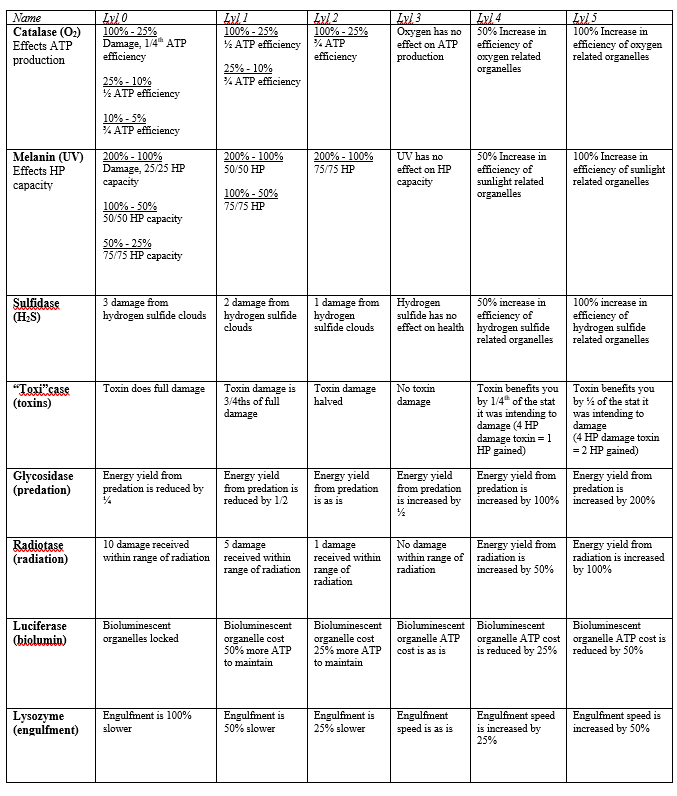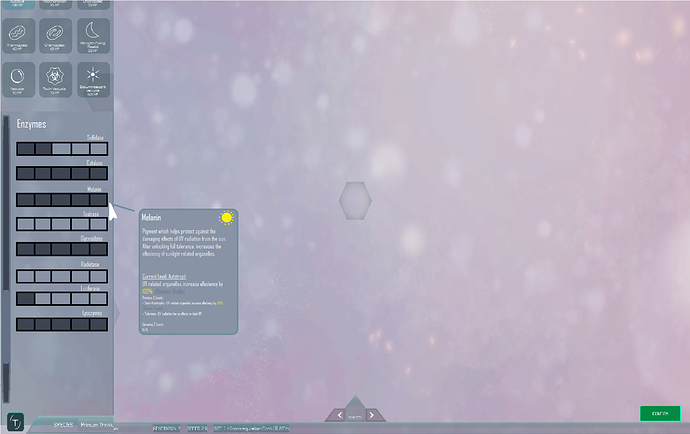Sorry for another double post.
I think at this point, my general concept of enzymes is finished, as the underlying mechanic behind each enzyme is established and the list of enzymes extensively covers most of the environmental/cellular functions which are present/planned at this point of Thrive’s development. There are two other environmental factors - temperature and pressure - which I believe should be regarded more as a function of organelle upgrades (I’m thinking membrane) rather than enzymes.
Here is the full list of enzymes:
Here is a basic concept I made regarding how this information could be presented to the player. Basically, the enzyme panel would be in the organelle section, either above or below the organelles themselves (I think below would be best. I think an upgrade cap of 20 is the best currently, as it gives you flexibility even after you invest in catalase and melanin, which are going to be must haves on probably 9/10 playthroughs.

